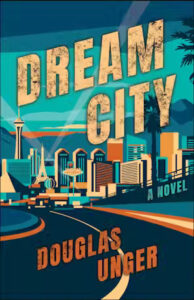
“Those Folks Never Had Their Lights Turned Off.” On the Literary Importance of Highlighting the Haves and the Have-Nots
From Barroom Chats with Raymond Carver to the Aperçus of Thomas Piketty, Douglas Unger Explores Class Consciousness in American Letters
Since reading Naomi Kanakia’s essay, “Contemporary Literary Novels Are Haunted by the Absence of Money,” I’ve been recalling how often, nearly fifty years ago, Ray Carver and I complained about the same issue. At one point in our lives, we lived next to one another in dumpy motel cabins near Iowa City that rented for $10 a night. We regularly loaned each other a ten-dollar bill to avoid eviction.
Ray said more than once in those days, “Someday, I’m going to write a story, Without a Dime.” He’d gesture toward an old movie on TV and say: “Those folks never had their lights turned off. You won’t catch them running out of TP.” He tossed out similar comments about writers, no matter how much he loved what they wrote (and he did)—John Cheever, Ann Beattie, John Updike—also the postmodernists who then dominated the literary scene—Thomas Pynchon, John Barth, Robert Coover. “Nobody’s getting evicted in their stories. No cars get repossessed.”
Thinking back, I realize our complaint wasn’t so much about money per se as about financially privileged vs. less privileged characters. Over the centuries, popular stories and novels often reinforced ideologies of the relatively well-to-do. What were these stories saying to people like us? Kanakia deftly argues how a lack of clarity about money in some contemporary novels leaves unanswered questions in tales sourced from the upper-middle and upper classes. My own take is that the literature of economic concern never went away, it rather swung for a time out of critical attention and popularity during an era of unmatched prosperity.
Over more than two centuries, so many writers make economic concerns central to their stories that one wonders how the “absence of money” would ever be an issue.
In the ‘70s and ‘80s, the New Realist movement, launched first through short stories, resurrected a strong focus on economic conditions: Ray Carver’s minimalist renderings of a disillusioned, down-and-out working class, joined by the “working poor” worlds of Bobbie Ann Mason, Richard Russo, Charles Baxter, and the early stories of Richard Ford. The New Yorker’s Bill Buford coined the term, “dirty realism” in an essay in Granta and included Jayne Ann Philips, Richard Bausch, Charles Bukowski, and early Tobias Wolff in this mix of writers who explored what he called “the belly-side of contemporary life.” To Buford’s list, I would add Barry Hannah, Thom Jones, Russell Banks, Dorothy Allison and Denis Johnson—New Realism sourced in the working class would dominate the literary scene for the following generation.
Together, these writers formed a dark, ironic recognition, often satirically humorous, of erosive life consequences of a disillusioned consumerist society in which so-called “upward mobility” felt like an empty adage, the punchline of a cruel social joke. As Carver wrote in his essay, “Fires”: “Hard work, goals, good intentions, loyalty, we believed these were virtues and would someday be rewarded. We dreamt when we had the time for it. But, eventually, we realized that hard work and dreams were not enough.” This was the “dirty” truth expressed by this new generation of American writers.
Jorge Luis Borges compared literary “influences” and how they move to a pendulum—any dominant aesthetic in a culture will swing in one direction to an extreme then back again in the opposite direction (also crossing borders, and source language worlds). It’s not as though any prevailing aesthetic stops moving, either—it keeps swinging back and forth through varying gradients of popularity with readers over time. Any new movement sets a new pendulum in motion. Concerns with poverty and less privileged characters had been popular previously, written in response to a stagnant economic system dominated by a wealthy upper class and the stasis of a working class trapped in barely subsistence-level penury.
Thomas Piketty, in his landmark work, Capital in the Twenty-First Century, uses France and Britain as examples, highlighting eras of worker abuse during the industrial revolution in Britain and the lack of upward mobility in the Belle Époque in France. His analysis extends universally (at least to Western capitalist systems). One of his theses is that the accumulation of wealth by a small, privileged percentage of the population causes economic stagnation. This stagnation passes down by inheritance, fixing an economy as in a block of cement, until war, cataclysm, or a severe economic crisis blows it apart, after which the capitalist system rebuilds with new players. Piketty’s analysis suggests our contemporary economy passed a 30 percent income-from-capital threshold that stagnates upward mobility a decade ago. This wealth disparity is still growing.
Could it be that writers of previous eras were responding to conditions of economic stagnation? In works by later Romantics and emerging Realists and Naturalists of 19th-century Europe, the absence of money and/or its desperate pursuit are major motivators—for Dickens, Dostoevsky, Balzac, Hauptmann, and Hamsun, and a bit later, around the turn-of-the-century, Stephen Crane and Theodore Dreiser in the United States.
Kanakia points out how in Jane Austen’s novels, letting readers know the yearly income of characters is essential to their expositions. Austen’s clear-eyed appraisals expose hard realities of the business of marriage—how money or its absence entrapped and oppressed women in a male hegemonic society. I’ll add that 19th-century playwright Henrik Ibsen used money and striving for it as central to his dramas that pioneered the new Naturalism: Nora, in A Doll’s House, achieves self-actualization and slams the door on her husband (and motherhood) when it’s revealed that she has been secretly earning her own money (shockingly, for her era).
Classics of the early to mid-20th century in the American canon rely on money as motivations: Dreiser’s major novels, as mentioned; Upton Sinclair’s muckraking The Jungle exposed the horrors of the meat-packing industry for both workers and consumers; Frank Norris’s The Octopus takes on railroad robber-baron monopolies exploiting family farmers. Near mid-century, John Steinbeck’s The Grapes of Wrath decries the inhuman “machine” of capitalism and how its agent, the cartels of the agrarian economy, plow individuals under and with them, our great “man soul,” our humane values.
The 1930s were a period of capitalist cataclysm—world economies had blown apart and were rebuilding. Several mainly forgotten classics of the era feature characters driven by these economic conditions, as in Tom Kromer’s Waiting for Nothing about the dispossessed unemployed, the so-called “hoboes” who rode the rails. As well, we find sentimental tales of characters who climb up out of poverty to reaffirm American ideals of individualism and perseverance, as in Betty Smith’s bestselling A Tree Grows in Brooklyn; or conversely, Nathanael West’s farcical satire of those same ideals in A Cool Million. During this mid-century period of economic concern, Arthur Miller portrays the soul-killing language of marketing and commerce in Death of a Salesman; and the anxiety and desperation caused by the Great Depression in his collage-form play, The American Clock. Miller exposes the pursuit of money and its language of sales, marketing, and dog-eat-dog hucksterism as forms of self-delusion.
Over more than two centuries, so many writers make economic concerns central to their stories that one wonders how the “absence of money” would ever be an issue. Still, even as a middle-class and, later, working-class literature swung powerfully into attracting readers, the elitist, so-called “golden age” tales also kept enlarging their cultural spaces. Henry James and Edith Wharton in the American canon; Oscar Wilde, Ford Maddox Ford, Aldous Huxley, Virginia Woolf in Great Britain; Colette, in France; also Isak Dinesen—gorgeous tales of the upper-middle and upper classes that advanced a Modernist aesthetic. F. Scott Fitzgerald’s novels and stories sourced in the social whirls of the privileged and leisure classes constitute, ultimately, a critique of the suspect values and excesses of the wealthy.
Hemingway straddled both worlds, in some stories a first-person or objective third-person voice observing characters for whom money is of little concern (as in The Sun Also Rises and many of his best known stories of the 1920s); while in others, he mythologizes characters from peasant classes (For Whom The Bell Tolls, The Old Man and The Sea, and in some of the Nick Adams stories). Other more elitist writers of the era include Mary McCarthy, also “the Algonquin circle,” Dorothy Parker, George S. Kaufman, Edna Ferber, Noel Coward, Robert E. Sherwood—writers for whom mention of money or even poverty in stories (except satirically, as in Parker’s “Big Blonde”), would have been viewed as tasteless or gauche. The literature of the privileged classes can feel like a kind of gated community. That may be part of its enduring attraction, why the rest of us enjoy it with a fascination not unlike voyeurs into forbidden worlds.
Two excellent novels of the 1970s and 1980s treat money and its acquisition as farce: William Gaddis’s National Book Award-winning J.R. (re-issued in a New York Review of Books Classics edition) starts with the sound of money, the jingling of coins juxtaposed to the “dead” paper bills. Amid its postmodern blizzard of dialogue and detritus of fragmented lives and language, Gaddis uses the magnetic vortex of a sixth-grader’s empire building from secretly trading penny stocks to an eccentric corporate behemoth that sucks in everything. Tom Wolfe’s The Bonfire of the Vanities is a send-up of Wall Street denizens dressed in expensive custom suits but blind to the gritty world around them to their own undoing.
One post-millennium example of a novel written with sharp awareness of its source in a gated community is Claire Messud’s The Emperor’s Children, in which the privileged class is treated with the subtle humor of a comedy of manners. With Messud’s stylistic elegance and highbrow wit, the novel evokes Ivy League egocentrism and the sad-funny pretensions of a cast of characters from the entitled elite. Aspirations for wealth just barely beyond reach power linked novels that follow the tragicomic journeys of Russell and Corrine Calloway in Jay McInerney’s Brightness Falls and The Good Life (the third, Bright, Precious Days, is more about NYC cocktail parties and tattered affairs). McInerney writes with a linguistic acrobatics and lyricism that seduces readers into money and its pursuit while at the same time satirizing how this consuming obsession strips the Calloways, especially Russell, of common sense and sanity. Note that in both The Emperor’s Children and The Good Life, the terrorist attacks of 9/11 shatter otherwise insular worlds—an act of war breaks through elitist consciousness, blows a stagnation apart, making room for characters to change.
As Thomas Piketty shows via his detailed graphs and charts, the post-World War II era generated an economic aberration for the United States in which income from concentrations of private capital dropped compared to income from labor to just below 20 percent by 1970, produced by a post-war boom and America’s neoliberal dominance of the world economy. So it may be only natural that, during this unusually prosperous era, concerns about money would become more remote.
Novels of the 1950s and 1960s asserted middle-class optimism in upward mobility. The fiction of the Jewish Literary Renaissance—Saul Bellow, Philip Roth, Bernard Malamud, Grace Paley and Cynthia Ozick, among others—pioneered a movement based in ethnicity, asserting Jewish culture, identity, and a shared history of the Holocaust as unifying themes. At the same time, these writers reaffirmed middle-class faith in the achievement of prosperity through hard work, education, and equal opportunity (ideals that reinforce the politics of assimilation). In the same era, John Updike’s Rabbit tetralogy develops one continuous tale of upward mobility and engages money ironically in Rabbit Is Rich—Rabbit trades his horde of gold coins for silver to take advantage of a market speculation then struggles, huffing and puffing, dragging his satchels full of heavy silver down the street to a vault where the coins scatter to the floor.
The emergence of the Jewish Literary Renaissance in the 1950s and 1960s and becoming “mainstream” (breaking out of an isolated community and through to a general readership) provided a marketplace model for literatures sourced in other ethnic and racial diversities. African American literature established its own pendular movement, the emergence (or re-emergence) of Wright, Baldwin, Ellison, the works of the Harlem Renaissance, harmonized with the Civil Rights movement which also strongly asserted underlying wealth disparities caused by racist economic injustice.
Still, even in later works—by Walker, Morrison, and recently through the masterful genre improvisations of Colson Whitehead—poverty is an ever-present symptom not the primary focus. It seems to me that Latinx writers let readers know more centrally the money struggles of characters—Cisneros, Quiñones, the linked stories and blended fictions with nonfiction of Tim Z. Hernández, the new immigrant writing of Reyna Grande, to highlight a few examples—electricity can be shut off, characters can be evicted (or deported). Or in Sandra Cisneros’ short story, “Barbie-Q,” Latina girls in a Chicago neighborhood must make do with charred, singed Barbie dolls salvaged from a toy warehouse fire.
In other emerging diverse literatures—South Asian American, Southeast Asian American, Chinese American, Caribbean American—new immigrant and first generation characters struggle with personal and social validations of their identities while at the same time expressing culture-specific attitudes toward achieving financial security.
Over the past 60 years, mainstream space in society has opened up for these diverse literatures to become the American story, including literatures of gender and LBGTQ+ identities and calls for justice, resulting in increasing social awareness of economic inequality caused by discrimination. Still, I read in these movements an ideation of aspirations for upward mobility, even when these longings are stifled, as in Carver, a belief that hard work, goals, good intentions, and loyalty, are virtues which—in America, at least—should one day be rewarded.
I see swinging our way a new literary movement that writes more forcefully against the current stagnation of “this economy that is killing us.”
One strong critique of the New Realist movement (especially Carver), poses questions: don’t these stories that put strong focus on money or its absence too often reaffirm rather than challenge financial success as a determinant of social value? Why did this working class movement emerge during an era of prosperity (could it be Rust Belt deindustrialization, jobs shipped overseas)? And in now mainstream diverse literatures, might money (and the striving for economic equality) function as an agency for assimilation, and, possibly, cultural erasure? Might the literature of economic concern serve in the main to reinforce, to paraphrase language from theorist Terrence Eagleton, the power structure and power-relations of the same stagnating capitalist systems (and societies) to which these writers might be responding?
Naomi Kanakia is right about the absence of money in books by some contemporary writers, but I think they’re exceptions, or new additions to the literature of the privileged classes. Over the past twenty years, American writers seem to me to be putting strong focus on money once more, and some do question the powers-that-be. Rachel Kushner’s The Flamethrowers weaves together contrasting worlds of capitalism, revolution, and art as an agent of change (along with much else the novel does, Reno’s love affairs manqué and her scrutiny of wealthy Sandro Valera amid the 1970s class wars in Italy). A new collection of stories by Wendy Wimmer, Entry Level, experiments with the surreal and gothic yet feels unified by characters who suffer from a malaise of being chronically underemployed.
They stoically accept disillusionment with their day-to-day lives: the bingo game dealer with life regrets, the cruise ship crew crammed into a closet, an IT support tech for texts sent beyond the grave, a daughter caring for a mother with dementia, the prescriptions costing more than her take-home pay. And over the span of five collections of stories, George Saunders’s surrealist tales and farcical allegories keep advancing the soul-destroying effects of varying (often fantastic) economies, characters forced to become grotesque performers at their jobs, some even to mutilate their bodies or the bodies of others. That so many characters willingly acquiesce to such harsh, disillusioning economic conditions is a learned helplessness. It’s as in Kafka—a bird goes in search of a cage.
The gated community of the privileged classes will always have its writers, read and enjoyed for high art and their rich, exclusive worlds. Piketty’s landmark study suggests that the powers-that-be that sustain capitalism rely on willing acquiescence so that wealth becomes ever more concentrated by fewer and fewer people—the mega-wealthy are now the richest human beings ever to inhabit planet earth. But I see swinging our way a new literary movement that writes more forcefully against the current stagnation of “this economy that is killing us,” to quote the late great environmentalist, Barry López. I hope my own new novel, Dream City, can contribute to this resistance. I look forward most eagerly to the new and emerging writers who will help to blow the system apart, and soon.
__________________________________

Dream City by Douglas Unger is available from University of Nevada Press.
Douglas Unger
Douglas Unger is the author of five novels, including Leaving the Land, a finalist for the Pulitzer Prize, and his new book, Dream City, as well as a collection of short fiction, Looking for War and Other Stories. He is co-founder of the Creative Writing International program at UNLV and serves on the executive board of Words Without Borders. Currently, he is completing a book of new essays, The Geometries of Fiction.












